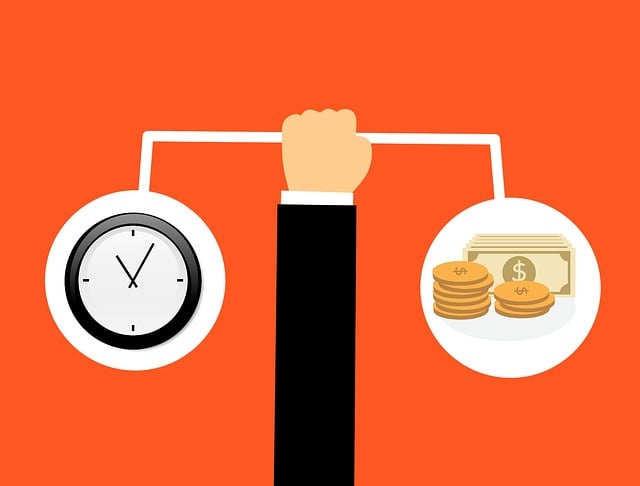A loan cost analysis (LCA) is essential for savvy business owners. By meticulously examining interest rates, fees, and charges before securing a loan, entrepreneurs can make informed decisions, align borrowing with growth plans, and manage cash flow effectively. Post-loan, strategic repayment planning, regular monitoring of key metrics, and ongoing LCA help optimize performance, reduce financial strain, and free up capital for strategic investments.
Maximize your business growth with strategic loan utilization. This guide navigates the effective use of business loans, from understanding diverse loan options and their associated costs to conducting a thorough loan cost analysis. Learn proven strategies for optimal loan utilization, crafting a sustainable repayment plan, and monitoring performance. By mastering these steps, you’ll harness the power of loans to fuel your business’s success while minimizing financial risks. Embrace informed decision-making with our comprehensive approach to loan cost analysis.
- Understanding Business Loan Options and Their Costs
- Conducting a Comprehensive Loan Cost Analysis
- Strategies for Effective Loan Utilization
- Building a Repayment Plan That Works
- Monitoring and Optimizing Loan Performance
Understanding Business Loan Options and Their Costs

Understanding different business loan options is the first step in making informed financial decisions. Before securing a loan, conduct a thorough loan cost analysis to evaluate each option’s interest rates, repayment terms, and fees. This process will help you determine the overall expense of borrowing and identify the most cost-effective solution for your business needs.
When examining loan costs, consider both fixed and variable interest rates, processing fees, collateral requirements, and potential prepayment penalties. Each factor plays a role in the overall financial burden of the loan. A detailed comparison will enable you to choose a lending option that aligns with your budget and growth objectives, ensuring a smooth borrowing experience for your business.
Conducting a Comprehensive Loan Cost Analysis

Before taking out a business loan, conducting a thorough Loan Cost Analysis (LCA) is paramount. This involves examining all associated costs, including interest rates, fees, and any additional charges. By breaking down these expenses, entrepreneurs can gain a clear understanding of the financial burden they are committing to. It’s not just about the principal amount; various factors can impact the overall cost, such as loan term length and repayment methods. A meticulous LCA empowers business owners to make informed decisions, ensuring the borrowed funds align with their financial goals and capabilities.
Furthermore, this analysis allows for a strategic approach to managing cash flow. By predicting potential costs, businesses can better plan for repayments and avoid unexpected financial strain. It encourages responsible borrowing and promotes sustainable growth by aligning loans with realistic expectations and budget constraints. Effective LCA is a powerful tool that fosters successful financial management and strengthens business resilience in the face of economic fluctuations.
Strategies for Effective Loan Utilization

To make the most of a business loan, a strategic approach is key. Begin by conducting a thorough loan cost analysis. This involves evaluating not just the interest rate but also any associated fees and charges. Understanding the total cost of borrowing allows for informed financial decision-making. By comparing different loan options, businesses can secure the best terms tailored to their needs.
Once the loan is secured, effective utilization depends on aligning funding with strategic goals. Prioritize investments in areas that drive growth and profitability. This could include expanding operations, purchasing valuable assets, or enhancing marketing efforts. Regularly reviewing and adjusting spending ensures funds are channeled efficiently, maximizing the loan’s impact and contributing to the overall success of the business.
Building a Repayment Plan That Works

Creating a robust repayment plan is key to effectively using business loans. The first step involves conducting a thorough loan cost analysis, breaking down the total loan amount into its constituent parts: principal, interest, and any associated fees. This allows entrepreneurs to gain a clear understanding of the financial burden they are taking on. By segmenting these costs, it becomes easier to allocate resources efficiently and make informed decisions about managing cash flow.
A strategic repayment strategy should then be crafted, considering both short-term and long-term financial goals. Setting up regular payments that align with your business’s cash flow cycle ensures sustainability. Moreover, exploring options like varying interest rates or loan terms can optimize the overall cost of borrowing, ensuring that the loan serves as a productive investment for the business’s growth and development.
Monitoring and Optimizing Loan Performance

Monitoring and optimizing loan performance is an essential step in ensuring your business loans serve their intended purpose effectively. Regularly review the financial health of your loan portfolio by tracking key metrics such as repayment rates, interest payments, and outstanding balances. This allows for early identification of any struggling loans or potential defaults, enabling proactive measures to mitigate risk.
Conduct a comprehensive loan cost analysis to understand the overall impact of borrowing on your business’s bottom line. Assess fees, interest rates, and repayment terms, comparing them against market averages. By optimizing loan conditions and negotiating better terms when possible, you can reduce financial burden and free up capital for strategic investments that drive growth.






